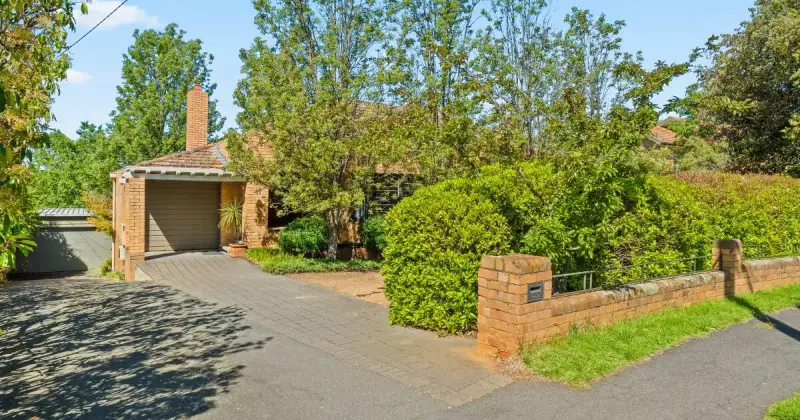
A remarkable piece of Canberra's architectural history has come onto the market, showcasing a unique collaboration spanning nearly seventy years. A home in Griffith, originally designed by prominent interwar architect Malcolm Moir in 1939, was sensitively expanded in 2008 by heritage specialists Philip Leeson Architects.
Now, the four-bedroom residence at 11 Bass Gardens is listed for sale for the first time in two decades, offering a rare opportunity to own a property with a serious design pedigree.
A Legacy of Design Excellence
The home's story begins with Malcolm Moir, one of Canberra's leading early architects. Moir was responsible for significant projects like the original Netherlands embassy and crafted high-end homes in the city's earliest suburbs. The Griffith property is a prime example of his work during a transitional period.
"11 Bass Gardens represented a period when Moir's houses had visible roofs to a more modernist style where the roofs were completely hidden," explained Philip Leeson. "So it's a little transitional house, is the way I would put it."
Stephen Thompson, the selling agent from LJ Hooker Manuka, notes that the home's understated quality is a major drawcard. "One of the biggest appeals to it is, it's not a showy or a trophy home," he said. "From the street, it's quite understated, and that's what a lot of buyers like."
Honouring the Past, Embracing the Present
When the current owners decided to expand the home in 2008, they engaged Philip Leeson Architects with a clear directive: honour the integrity of Moir's original design. For Mr Leeson, retaining as much of the original fabric as possible was paramount.
From the street, the original brick exterior remains unchanged, preserving its unassuming character. The rear of the home, however, tells a story of two eras. The modern extension includes a large terrace and a light-filled kitchen, seamlessly connecting with the original living spaces.
A key challenge was the addition's exterior. Instead of attempting to match the original, creamy-coloured bricks, the team chose a weatherboard exterior. This decision was made to "emphasise the horizontality of the original house," as a modern brick would have looked out of place.
Living with a View
The design of the house masterfully capitalises on its sloping block. The upper level houses the living room, dining area, and main bedroom, all positioned to take in the scenic outlook. A key success of the renovation was the addition of a deck that was carefully designed not to obstruct this prized view.
"You can see across the courtyard through the terrace to the view behind. That was one of the really nice outcomes of the way this house turned out," Mr Leeson remarked. "Being able to see across the terrace was really key to the success of this house."
The kitchen and family room open directly onto this upper-level deck, creating a fluid indoor-outdoor flow. Downstairs, three additional bedrooms provide access to the outdoor pool, spa, and a private courtyard.
The property, a testament to thoughtful architectural evolution, is scheduled for auction on Saturday, December 6, inviting a new chapter for this historically significant Canberra home.





